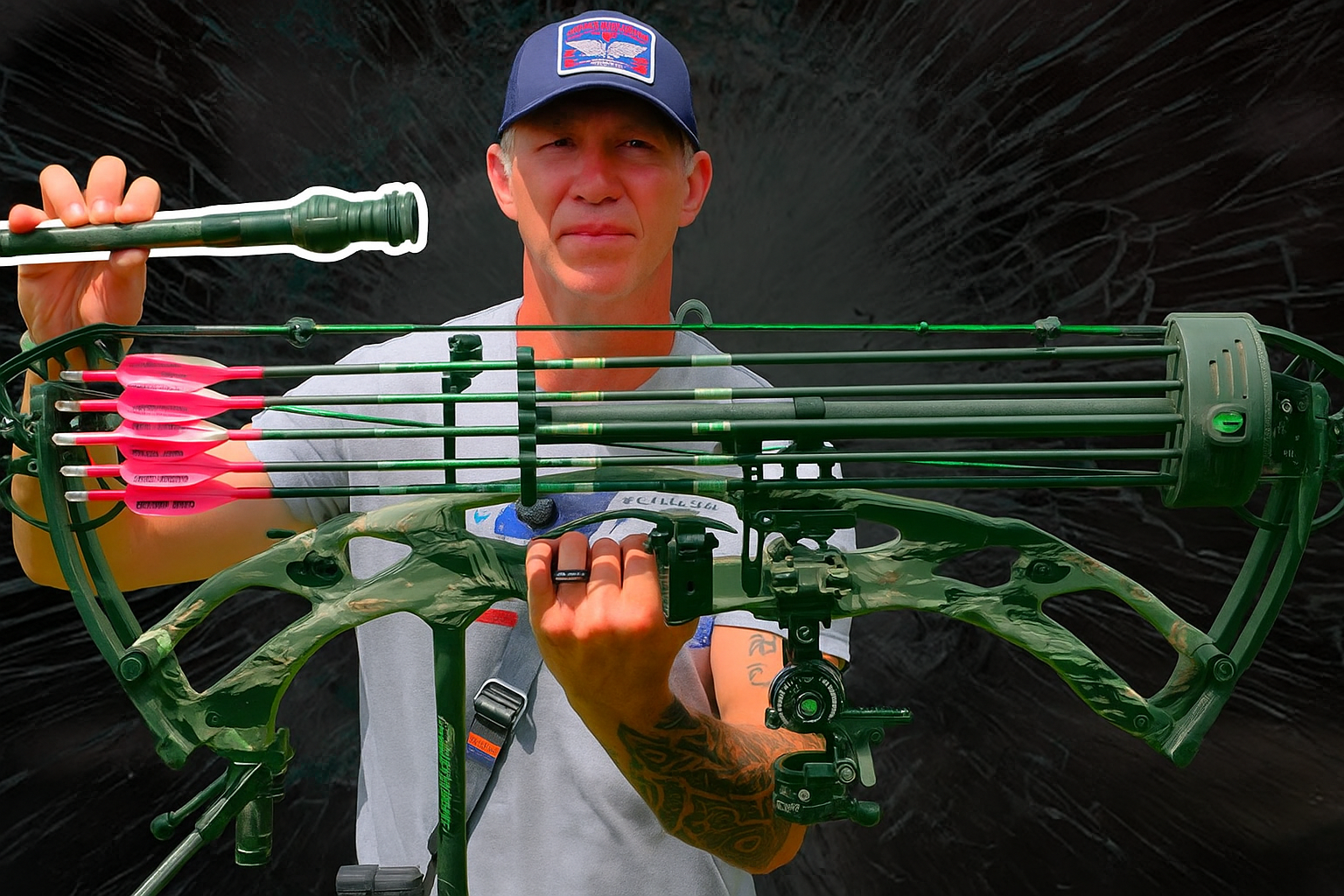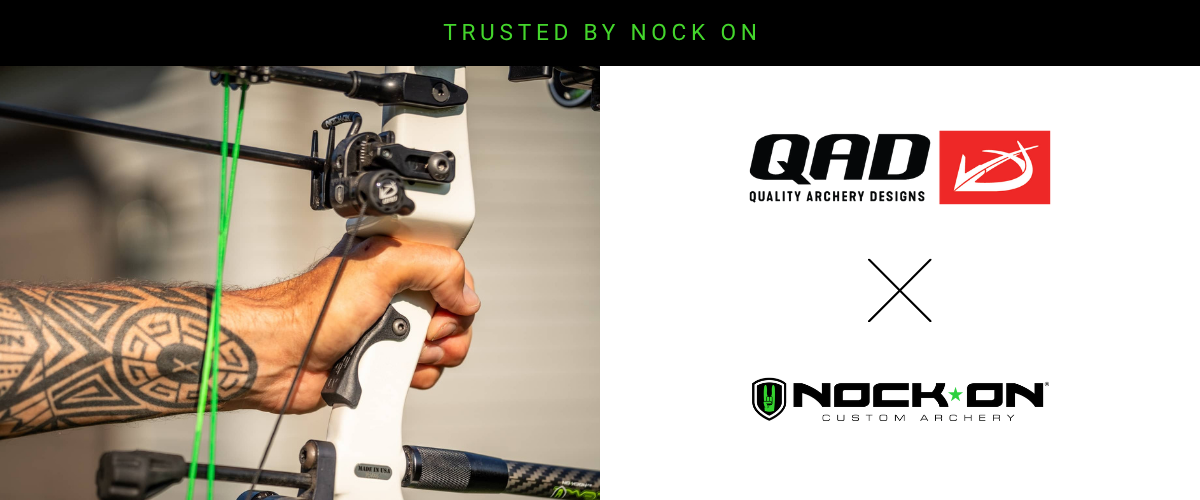When August rolls around and I’m prepping my gear for hunting season, I start the transition from my competitive setup to my hunting rig. One of the questions I field most often from fellow bowhunters is about my stabilizer setup, particularly why I don’t use rear stabilizers (back bars) for hunting scenarios.
After decades in the field, I’ve developed strong opinions about what works when you’re stalking elk in tight timber or sitting in a frost-covered tree stand. Let me break down my thoughts on rear stabilizers and why simplicity almost always wins in hunting situations.
The Case Against Rear Stabilizers in Hunting Situations
If you’ve watched tournament archers or followed competitive archery, you’ve seen elaborate stabilizer setups with long front bars and angled rear stabilizers loaded with weights.
This configuration creates incredible aiming stability for competition and does offer a nice counterbalance to the loaded quiver, but it introduces problems for me in hunting scenarios.
Maneuverability Matters More Than You Think
When I’m hunting, I’m typically carrying my bow in my left hand as I navigate through terrain. I want my right hand at the ready for a range finder or my release. With a rear stabilizer, I’m constantly fighting a protruding metal rod that bangs against my leg with every step when it’s on my left side.
This isn’t just annoying. It creates noise and reduces my mobility.
The problem compounds when stalking game: When I need to crawl toward an animal, I’m typically moving with my bow horizontally in front of me. A rear stabilizer becomes a ground-snagging liability, catching every blade of grass, branch, or obstacle in its path.
Early-season hunts in Alberta canola or wheat fields make this especially problematic. Try belly-crawling through chest-high vegetation with an eight-inch bar sticking off the back of your bow, and you’ll quickly understand why I’ve abandoned the back bar for hunting.
The same is true when hunting the western hills covered in buckbrush, scrub oak, or tall sage.
Space Constraints in Tree Stands and Blinds
Anyone who’s hunted from a tree stand knows space comes at a premium, as does weight supported by a hanger.
You’re already managing limited room to draw and shoot without banging your bow against the tree or stand rails. Adding a rear stabilizer that juts out to the side increases the bow’s footprint and reduces your shooting options.
In addition to that, most bow hangers have a load rating that’s less than desirable. Many of the bow hangers I have can even slip position with just the weight of a loaded quiver; if you add on the side bar, it often prevents you from being able to extend the hanger so your bow is out at arm’s length.
Ground blinds present similar challenges. With shooting windows and tight quarters, a single front stabilizer’s streamlined profile gives me more positioning options and fewer objects to bump when a deer suddenly appears at 20 yards.
The Quiver Weight Argument Doesn’t Hold Up
One common justification for rear stabilizers is that they offset a loaded quiver’s weight. This argument made more sense decades ago when quivers were heavier and mounted farther from the riser.
Today’s hunting quivers are lightweight. We’re talking mere ounces, and most mount closer to the bow’s centerline. On my hunting setup, the quiver sits tightly against the riser, creating minimal imbalance.
The weight offset argument doesn’t justify the added complications of a rear stabilizer.
My Hunting Stabilizer Philosophy
After years spent testing different configurations, I’ve settled on a straightforward approach to stabilization for hunting:
Playing Devil’s Advocate: Before I continue my opinion on this topic, I do want to look at it from a perspective that it can serve a purpose. I do have a friend who is a well-seasoned archer, both in hunting and target. They have a natural grip position that really “cants” the bow like when using a trad bow. Because of this hand position, they really need that side weight to level up properly. I’ve always argued it’s a Band-Aid for a less-than-desirable grip position. However, if that position is the most repeatable for them and their style, then the “repeatability” would outweigh the latter.
Simplicity Wins in the Field
My hunting setup features a single, short front stabilizer, usually our Riddance model, which measures about 10 inches in total length, including the dampener and weights.
This configuration gives me:
- Maneuverability: The bow stays streamlined and easy to carry through thick cover.
- Noise suppression: I still get vibration dampening from the front stabilizer.
- Bow protection: The front stabilizer serves as a standoff when I set my bow down, keeping my sight and bottom cam from contacting the ground.
- Packability: The simplified setup fits easily in a case, on a pack, or in a vehicle.
The Transition Process
About three weeks before hunting season, I begin transitioning from my target setup to my hunting configuration. This process involves removing the longer front stabilizer (often a 13-inch setup for TAC season or indoor competition) and the rear stabilizer completely.
I replace them with a shorter front stabilizer, typically with just one ounce of weight on the end. This weight, combined with the rubber suppressor, provides enough vibration dampening to deaden sound and hand shock without adding unnecessary bulk.
Modern Solutions for Traditional Problems
With newer bow designs like Hoyt’s Go-Stix system, we’ve gained more options for bow stability in the field. These small, foldable legs attach to the bottom of the riser, allowing you to set your bow down anywhere without worrying about it falling over or damaging your sight or cams.
Mounting a short suppressor on a quick-detach system gives me the feel I want and maintains the simplicity I need. The bow balances naturally, without trying to fall to one side, and stays dead quiet on the shot.
Finding What Works for You
Stabilization is a personal preference, requiring trial and error to find what works for your bow, shooting style, and hunting situations. Weight distribution, whether forward or back, changes how your bow feels and aims, so there’s no one-size-fits-all solution.
Simpler is almost always better when it comes to hunting setups. A streamlined rig with minimal accessories creates fewer opportunities for something to go wrong when that trophy buck steps into your shooting lane.
The Setup That Gets It Done
My hunting setup prioritizes four attributes: simplicity, maneuverability, quietness, and reliability. A single, short front stabilizer checks all these boxes without the added complications of a rear stabilizer.
When I’m three weeks out from opening day, the target stabilizer configuration comes off, and my hunting setup goes on: clean, basic, maneuverable, and bulletproof in the field.
After all, the best bow setup is the one that disappears from your consciousness the moment that bull elk steps into your shooting lane, leaving you focused on nothing but the perfect shot placement.






 massmonopoly
massmonopoly